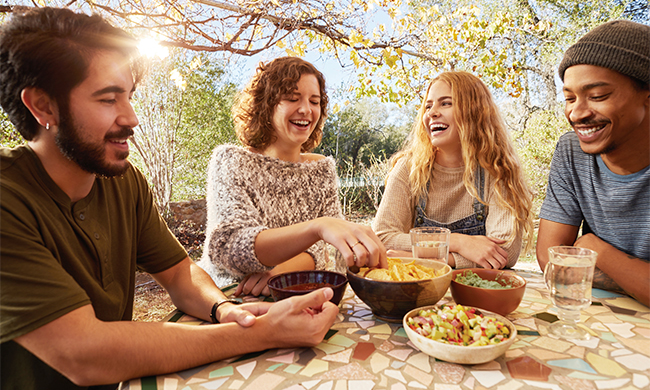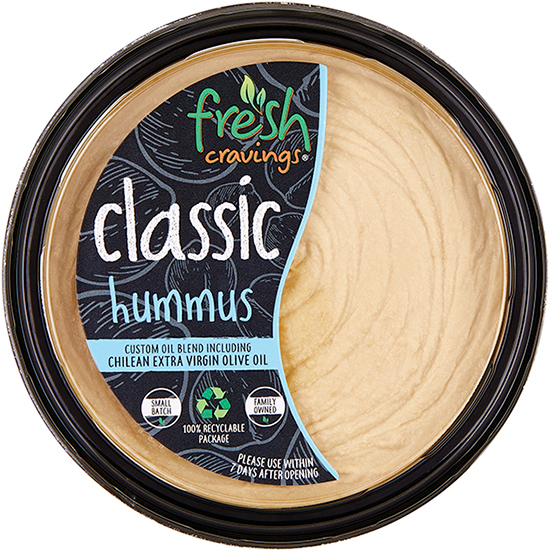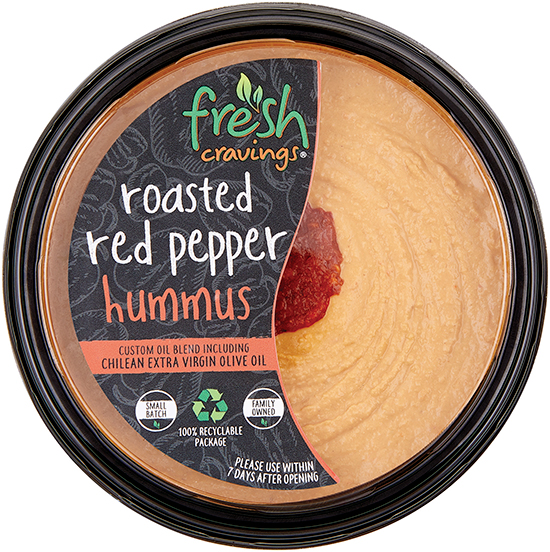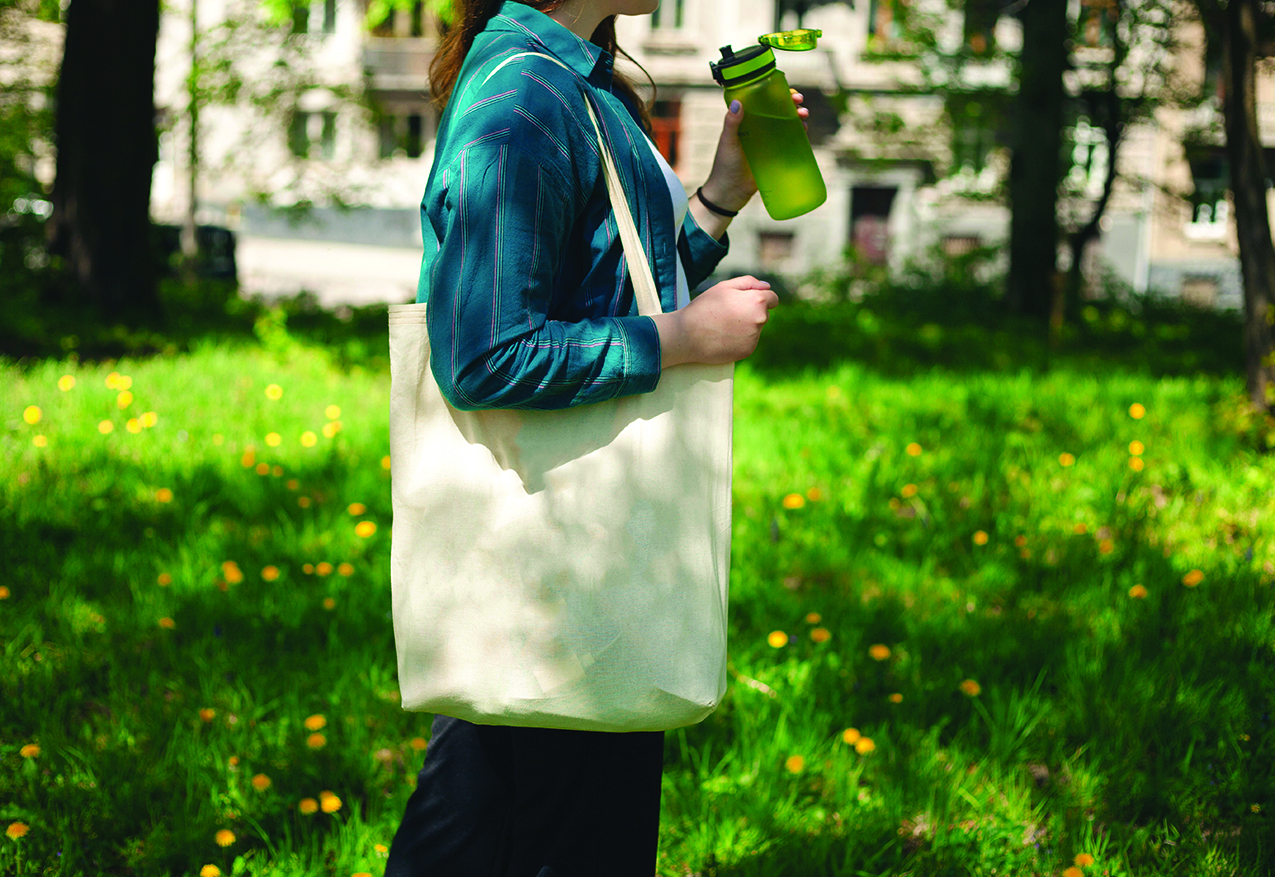HEALTHY LIVING
7 ways to snack smarter

(Family Features) Eating a balanced breakfast, lunch and dinner each day is an important part of maintaining a healthy diet, but what you eat between mealtimes can have just as much of an impact.
Eating a snack or two between traditional meals helps curb hunger and prevents overeating at mealtimes, provides an energy boost and can also help bridge nutrient gaps in your diet when you choose the right foods. On the other hand, consuming foods of little nutritional value out of boredom or habit can lead to eating too much and adding extra pounds to your waistline.

The key is taking a smart approach to snacking and making small shifts toward healthier choices. Consider these simple strategies to help you get started from the snacking experts at Fresh Cravings.
Snack Mindfully. It’s easy to overeat and overlook fullness cues when snacking in front of the TV or at a desk. Instead, treat snack time like you would a small meal and take a few minutes to eat in a designated area with limited distractions. Avoid eating out of boredom or stress and choose whole foods like fruits and vegetables or air-popped popcorn over processed chips, baked goods or candy.
Plan Ahead. Snacks can be a significant portion of many people’s daily caloric intake, so it’s important to include snacks when planning out your meals for the day or week. Include fruits, vegetables and proteins in your snack schedule and avoid refined starches and sugar, which are typically found in prepackaged and processed snacks. Planning and preparing snacks ahead of time can help you bypass those quick, unhealthy options and save money in the process, as well.
Make Healthy Snacking Easy. Keeping fruit, vegetables and other accessible nutritious ingredients in the refrigerator or pantry increases the chances you’ll reach for a better-for-you option when a snack craving strikes. Having staple ingredients on hand that can be paired with vegetables or whole-grain crackers like Fresh Cravings Hummus makes it easy to create healthy snacks. Made with high-quality ingredients like smooth Chilean extra-virgin olive oil, savory tahini, which is known to be a source of antioxidants, vitamins and minerals, and non-GMO chickpeas, the line is available in Classic Hummus, Roasted Red Pepper and Roasted Garlic varieties and can be found in 100% recyclable packaging in the produce aisle of your local grocery store.

“Look for options that are filling and nutrient-dense,” said Mia Syn, MS, RDN, a dietitian who has helped millions learn healthier, sustainable eating habits. “My preference is Fresh Cravings Hummus because it’s a great example with whole-food ingredients like tahini, Chilean extra-virgin olive oil and non-GMO chickpeas, offering a balanced mix of filling fiber, plant-based protein and good fats.”
Combine Nutrient Groups. Each time you reach for a snack, try to include two or more macronutrients (protein, fat, carbohydrates). For example, choosing foods containing protein like low-fat cheese or nuts and pairing them with carbohydrates (whole-grain crackers, grapes) can create balanced, filling snacks. Carbohydrates help provide both your body and mind with energy while protein-rich foods break down more slowly, helping you feel full longer. Other ideas include celery and peanut butter or fruit and Greek yogurt, which are easy ways to get more low-calorie, high-fiber produce into your diet.
Pay Attention to Portion Sizes. Snacks are meant to help ward off hunger between meals, not be substitutes for meals entirely. While measuring out snacks isn’t usually necessary, having an awareness of appropriate portion sizes can be helpful. If buying or cooking in bulk, divide snacks into smaller containers when meal planning to make it convenient to simply grab an appropriate size snack and continue your day.
Pack Snacks to Go. Having grab-and-go snacks packed while out running errands, working or completing everyday tasks can help keep you on track when hunger strikes. Packing items that don’t require refrigeration like trail mix, whole-grain crackers or granola bars can keep you from stopping at a convenience store or picking an unhealthy option from a vending machine. Preparing snacks at home also gives you more control over the ingredients you’re eating to ensure you’re sticking to an eating plan that’s better for your overall health.
Set a Good Example. Parents can influence children’s snack habits by consuming healthy snacks themselves. An option like sliced veggies paired with the rich flavors of chickpeas and creaminess of tahini found in hummus can be a perfect match to both satisfy hunger in a delicious way and build better-for-you habits. Snack time is also an opportunity to let kids learn about healthy eating by participating in choosing and preparing snacks. Cutting fruits and vegetables or turning foods into crafts are easy ways to get little ones involved in the process.
“For families challenged with integrating more veggies into their diets, hummus is also a kid-friendly flavor enhancer that packs beneficial nutrition instead of the saturated fats and sugar often found in many traditional dressings and condiments,” Syn said.
Smart Snack Ideas

Between work, school, extracurricular activities and family functions, it may seem like there’s no time to eat healthy when your family is seemingly always on the go. However, finding the proper fuel is even more important when you’re trying to balance a hectic schedule, which is where snacks can play an important role between meals.
Consider these nutritious snack options that can help satisfy a variety of cravings without taking up too much of that valuable time.
Crunchy Munchies
- Apples or pears
- Carrot and celery sticks
- Cucumber or bell pepper slices
- Air-popped popcorn
- Brown rice cakes
- Nuts and seeds
Low-Sugar Sips
- Plain or sparkling water (add fruit or herbs for extra flavor)
- Unsweetened tea or coffee
- 100% vegetable or fruit juices with no added sugars
Satisfying Noshes
- Sliced vegetables with Fresh Cravings Classic, Roasted Red Pepper or Roasted Garlic Hummus
- Fruit and vegetable smoothies
Find more ideas to satisfy snack cravings at freshcravings.com.
Photo courtesy of Getty Images (Friends snacking)
SOURCE:
Fresh Cravings
HEALTHY LIVING
How to conduct a skin care self-exam

Time spent soaking up the summer sun is one of the things that makes the season so appealing. Warm outdoor air has a calming effect that can make anyone feel more relaxed and comfortable.
As good as warm summer sun can feel, overexposure to the sun can be dangerous. The World Cancer Research Fund reports there were more than 330,000 new cases of skin cancer diagnosed across the globe in 2022. A significant percentage of skin cancer cases can be prevented, and prevention is a multifaceted process that includes skin care self-examinations. Self-exams do not take up much time, and individuals can speak with their physicians about how frequently they should check their skin for signs of skin cancer. The U.S. National Library of Medicine offers the following instructions for how to conduct a skin self-exam.
Choose the right time to examine your skin. The USNLM recommends conducting a skin exam after bathing. Women who routinely conduct breast self-exams can check their skin at this time as well.
Use a full-length mirror. ItÕs not always easy to examine skin throughout the body. But signs of skin problems can occur anywhere on the body, including areas that might be hard to see without help. If possible, conduct a self-exam of the skin in front of full-length mirror in a brightly lit room.
Identify what youÕre looking for. The USNLM notes you should be looking for any new skin markings. This includes bumps, moles, blemishes, and changes in skin color.
Pay close attention to preexisting moles. A potential sign of skin cancer includes moles that change over time. Examine preexisting moles to see if they have changed in size, texture, color, and shape.
Look for unusual moles. The USNLM characterizes certain moles as Òugly duckling moles.Ó These unique moles look and feel different from nearby moles and may be indicative of skin cancer. Speak with a dermatologist if a self-exam uncovers the presence of moles with uneven edges or differences in colors or asymmetric shapes. Moles that look different from one side to the other also should be brought to the attention of a dermatologist. Moles that do not stop bleeding or will not heal also merit examination by a skin care professional.
When the time comes to conduct the exam, the USNLM recommends following these steps:
- Look closely at your entire body, both front and back, in the mirror.
- Check under your arms and on both sides of each arm. Be sure to examine the backs of your upper arms, which can be hard to see.
- Bend your arms at the elbow, and examine both sides of your forearm.
- Examine the tops and palms of your hands.
- Examine the front and back of both legs.
- Examine your buttocks and between your buttocks.
- Examine your genital area.
- Examine your face, neck, the back of your neck, and scalp. Use both a hand mirror and full-length mirror, along with a comb, to see areas of your scalp.
- Examine your feet, including the soles and the spaces between your toes.
- Ask a person you trust to help examine hard-to-see areas.
Skin cancer poses a formidable threat, but many cases of the disease are preventable. Routine skin self-exams are a vital component of skin cancer prevention. TF256909
HEALTHY LIVING
What does 100% grass-fed organic dairy bring to your table

(Family Features) It’s no secret that many grocery store dairy sections are filled with more options today. One choice continuing to gain favor with consumers is 100% grass-fed organic dairy. Nutrition, environmental awareness and animal care are some of the leading reasons consumers choose grass-fed dairy products.
Globally, the 100% grass-fed dairy market is projected to continue growing and some market experts predict annual growth rates as high as 22%. If you’re curious about 100% grass-fed organic dairy, consider these benefits from Maple Hill, America’s original 100% grass-fed organic dairy producer. The pioneer of 100% grass-fed organic dairy took its commitment a step further by celebrating and declaring National 100% Grass-Fed Organic Dairy Day on April 15, which recognizes the positive impact it has on consumers, cows, farmers and the environment.
1. Honoring the Farmers
Unlike large-scale corporate dairy farms, most organic farms are small, family-owned operations dedicated to traditional, sustainable farming. Small dairy farms have been disappearing, but 100% grass-fed organic dairy creates a sustainable, viable path forward for farmers who work in harmony with nature.
This more natural approach to dairy is a “craft” process favoring small family farmers who are willing to dedicate the extra focus and patience to a better product and process. These family farms are passed on to future generations to grow the “better for you, better for the planet” approach.
2. Commitment to Good Health
Most consumers don’t know the difference between traditional organic and 100% grass-fed organic dairy. One key distinction is the products’ nutritional composition; 100% grass-fed organic dairy provides a 50% healthier ratio of omega 3:6 and 40% higher levels of CLA fatty acids, which may support heart health and provide other health benefits.
What’s more, Maple Hill’s products made with 100% grass-fed organic dairy are GMO free, hormone free and antibiotic free with no additives or fillers. The line of high-quality, rich-flavored products let you experience the organic difference from traditional dairy for a nutrient-dense solution that tastes as nature intended.
3. Happy, Healthy Cows
Cows on a 100% grass-fed diet can live up to three times as long as grain-fed cows and are never subjected to unnatural diets, hormones or antibiotics. More time in pastures filled with lush grass means cows have the freedom to roam, ruminate and graze on diverse, nutrient-rich grasses.
The result is happier, healthier cows, which in turn results in a richer, better-tasting and more nutrient-dense milk.
4. Sustainability and the Environment
Producing milk without grain or corn requires farmers to focus on regenerating soil and the soil life that supports everything else on the farm. In fact, the healthier the soil, the healthier the feed, so farmers have a natural incentive to be as regenerative as possible. Regenerative grazing practices are a powerful and positive tool to improve land and the web of life on farms by actively restoring soil health, promoting biodiversity and reducing the environmental impact compared to conventional dairy.
Well-managed grazing helps pull carbon from the atmosphere into the soil, fighting climate change in the process. In addition, healthier soil retains more water, reducing runoff and protecting water sources from agricultural pollution.
5. Strengthening the 100% Grass-Fed Organic Market
Consumers are increasingly aware of the choices they have in dairy products and how 100% grass-fed organic supports their health, farmers, animals and the planet. Some ways to support this category’s continued growth include choosing certified 100% grass-fed organic dairy, advocating for regenerative farming and helping shape a more sustainable food system.
Learn more about 100% grass-fed organic dairy products at maplehill.com.
SOURCE:
HEALTHY LIVING
Promote health with these daily habits

Health should be a priority, but too often life gets in the way and individuals take a reactive, rather than proactive, approach to their personal well-being. But living healthier need not be so difficult. In fact, research suggests that small, positive changes in how a person lives each day creates a healthier person over time.
A Hologic-Gallup survey on the state of women’s health conducted in April 2024 found 63 percent of respondents said it was hard for them to make health a priority. They cited feeling overwhelmed, needing to care for others before themselves, emotional/mental health, and work as the top barriers to focusing on health. But it’s important that both women and men recognize that small changes can add up to big results. These healthy habits can help individuals start living healthier lifestyles.
· Get some exercise. Regular physical activity is one of the most important things a person can do fo his or her health. Exercise helps manage weight, reduces the risk of disease, strengthens bones and muscles, and improves brain health. The Centers for Disease Control and Prevention says adults should aim for at least 150 minutes (30 minutes a day for five days) of moderate-intensity aerobic activity a week. A great place to begin is with a daily walk, which is a simple and effective habit that does not require a lot of time and no equipment except a good pair of athletic shoes.
· Wear sunscreen every day. After washing your face each morning, apply a facial moisturizer with an SPF of at least 30, or blend equal parts of sunscreen and regular moisturizer, suggests Harvard Health. Use it on the face, neck, ears, and any thinning hair spots on the scalp. Skin cancer is the most common type of the disease worldwide, and wearing sunscreen can help many people avoid it.
· Spend time outdoors. It takes just a few minutes in the sun to raise vitamin D levels. Vitamin D is necessary for bone and heart health and helps to boost mood, says WebMD. Various studies indicate spending time in green spaces promotes calm and increases happiness.
· Plan your meals. Meal planning is not just a way to manage food budgets. It’s also a great method to being more mindful of food choices and avoiding impulse buys or meals that may not be as healthy as they can be. Adding more plant-based foods to a diet is a good start. Such foods can reduce the risk of chronic conditions like high cholesterol and hypertension.
· Stay hydrated. Hydration supports good digestion, increases energy and may improve brain performance, states Harvard Health. Drink a glass of water each day upon waking up and with every meal. Older adults often do not feel thirst like they did when they were younger, so it is especially important for seniors to stay hydrated.
Healthy habits are more easily adopted when people begin small and make a daily commitment to their overall health.
-

 NEWS2 years ago
NEWS2 years ago2 hurt, 1 jailed after shooting incident north of Nocona
-

 NEWS2 years ago
NEWS2 years agoSuspect indicted, jailed in Tia Hutson murder
-

 NEWS2 years ago
NEWS2 years agoSO investigating possible murder/suicide
-

 NEWS2 years ago
NEWS2 years agoWreck takes the life of BHS teen, 16
-

 NEWS2 years ago
NEWS2 years agoMurder unsolved – 1 year later Tia Hutson’s family angry, frustrated with no arrest
-

 NEWS2 years ago
NEWS2 years agoSheriff’s office called out to infant’s death
-

 NEWS2 years ago
NEWS2 years agoBowie Police face three-hour standoff after possible domestic fight
-

 NEWS2 years ago
NEWS2 years agoDriver stopped by a man running into the street, robbed at knifepoint






